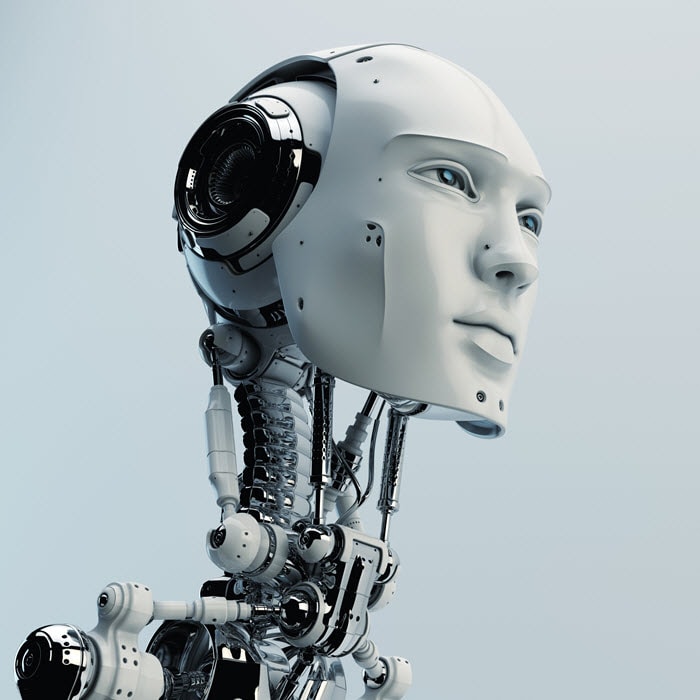Using autonomous robots to drive supply chain innovation has been saved
Perspectives
Using autonomous robots to drive supply chain innovation
Future trends in supply chain
New technologies are presenting promising opportunities for improvement across the supply chain. Here’s how autonomous robots and drone aircraft are poised to change the game.
Explore content
- Worth the investment
- Recent developments and outlook
- Driving value in the supply chain
- The bottom line
- View our report
Worth the investment
Autonomous robots are in a growing category of devices—including drone aircraft (aerial robots)—that can be programmed to perform tasks with little to no human intervention or interaction. They can vary significantly in size, functionality, mobility, dexterity, artificial intelligence, and cost, from robotic process automation to flying vehicles with powerful image and data capturing capabilities. Increasingly, autonomous robots are programmed with artificial intelligence to recognize and learn from their surroundings and make decisions independently.
No longer the stuff of science fiction, autonomous robots are already bringing innovation to the supply chain and delivering significant value, chiefly because they can help:
- Improve speed and accuracy of routine operations, particularly in warehousing and manufacturing
- Add efficiency through side-by-side work with humans
- Reduce the risk of employee injury in dangerous environments
Autonomous robots are helping define the supply chain of the future by helping companies decrease long-term costs; provide labor and utilization stability; increase worker productivity; reduce error rate; reduce
Deloitte recommends: Continue to monitor advancements in autonomous robots for applicability to supply chain. Autonomous robotics have the potential to improve operations, and they offer new opportunities to increase productivity, reduce risk, decrease cost, and improve data collection, particularly as customer expectations and volumes of packages, shipments, and orders reach unsustainable levels for traditional approaches.
Recent developments and outlook
Autonomous robots are expected to see strong growth over the next five years, particularly within supply chain operations that include lower-value, potentially dangerous or high-risk tasks. Autonomous robots have a strong presence already in manufacturing, final assembly, and warehousing, for example. The supply chain of the future is likely to see continued growth of autonomous robots in these areas, allowing people to shift to more strategic, less dangerous, and higher value work.
Autonomous robots will be more ubiquitous in the supply chain of the future as advancements make them operate with more human-like abilities. For example, improvements in haptic sensors—those relating to the sense of touch—will allow robots to grasp objects ranging from fragile eggshells to multi-surfaced metal assembly parts without changes in programming or robotic components.
As autonomous robots become more sophisticated, the setup times are decreasing, they require less supervision, and they are able to work side by side with their human counterparts. The benefits are expanding as autonomous robots become capable of working independently around the clock with more consistent levels of quality and productivity, performing tasks that humans cannot, should not, or do not want to do.
As the market for autonomous robots grows, the end-to-end supply chain operations alignment will become more fluid. Currently, many companies use autonomous robots for targeted functions in the supply chain, piloting various robots to verify gains. As innovative companies grow and expand operations, robots that build robots could be one of the future trends in supply chain, becoming the norm for optimizing manufacturing operations.
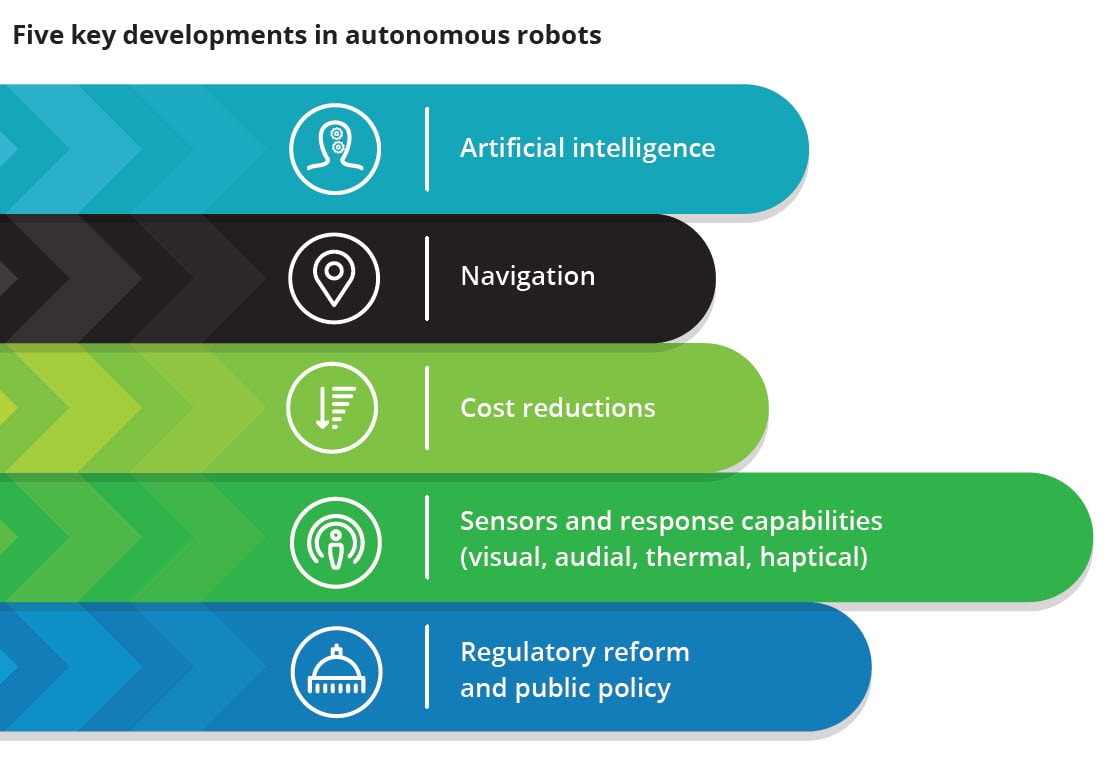
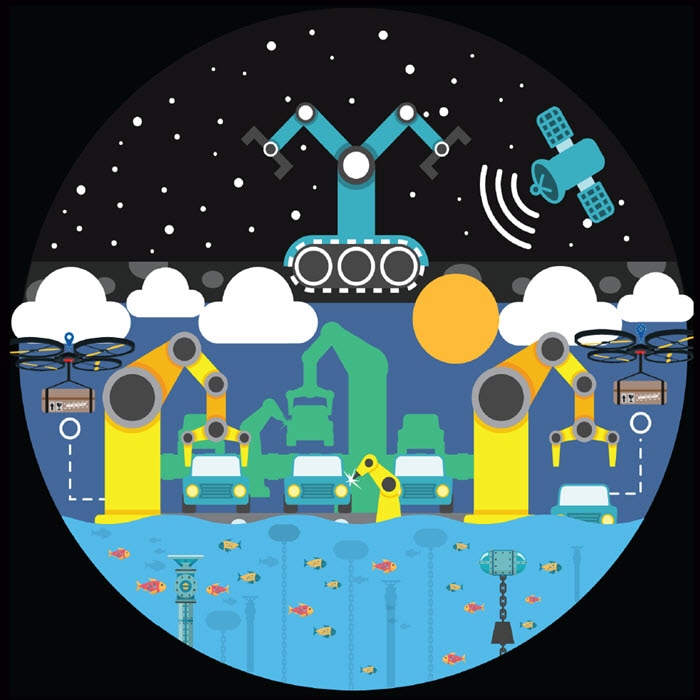
Driving value in the supply chain
Traditionally, autonomous robots have been deployed for executing routine and repetitive tasks, requiring complex programming for setup and implementation while lacking the agility to easily adjust operations. As autonomous robots become more sophisticated, set up times are decreasing, they require less supervision, and they are able to work side by side with their human counterparts. The benefits are expanding for the supply chain of the future as autonomous robots become capable of working around the clock with more consistent levels of quality and productivity, performing tasks that humans cannot, should not, or do not want to do.
Autonomous robots primarily drive supply chain innovation and value by reducing direct and indirect operating costs and increasing revenue potential. Specifically, autonomous robots can help:
- Increase efficiency and productivity
- Reduce error, re-work, and risk rates
- Improve safety for employees in high-risk work environments
- Perform lower value, mundane tasks so humans can work collaboratively to focus on more strategic efforts that cannot be automated
- Enhance revenue by improving perfect order fulfillment rates, delivery speed, and ultimately, customer satisfaction
Secondary potential benefits of autonomous robots include:
- Enhanced employee value through focus on strategic work instead of mundane tasks
- Focus on personal safety by minimizing work in hazardous areas for employees
- Boosted corporate brand by signaling leading-edge practices and implementation of innovative technology
- Exponential learning by collecting and analyzing machine data
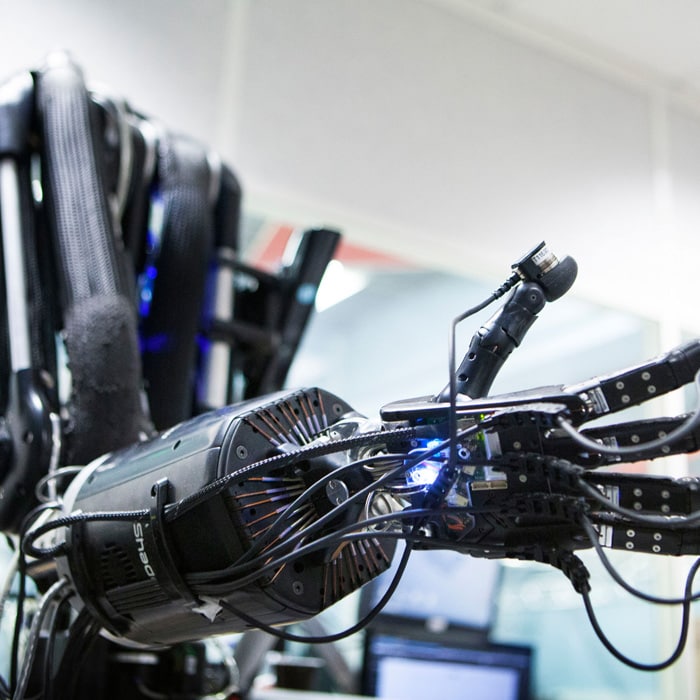
The bottom line
The time for companies to assess their supply chains for piloting autonomous robots is now. Depending on needs and existing capabilities within the supply chain, implementing autonomous robots—from robotic process automation to self-guiding, vehicles with artificial intelligence—can provide significant improvements in productivity and efficiency, while reducing labor costs and improving customer satisfaction.
As technology and autonomy continues to improve and prices decrease, the question is no longer whether autonomous robots will find a way into the supply chain of the future, but where and how soon.
Download our full report on future trends in supply chain, Using autonomous robots to drive supply chain innovation, and contact us to find out more about how autonomous robots can improve your supply chain and your business.
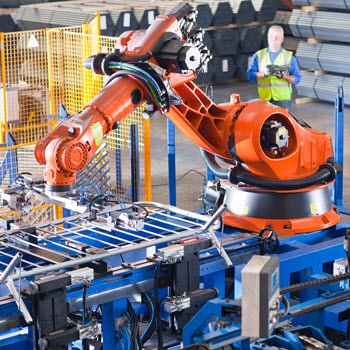
Explore More
| Interested in learning more about supply chain trends? View our other reports on supply chain innovation | |
| Learn more about how organizations are achieving operational performance breakthroughs as digital supply networks enable supply network visibility—and unprecedented insights in manufacturing. |
